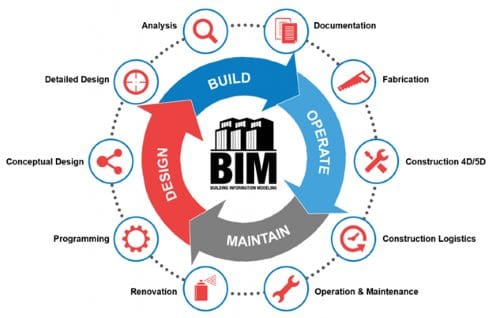Building Information Modeling (BIM) is used extensively by Architecture, Engineering and Construction (AEC) companies. The use of BIM data allows each discipline working on a project to see the work of others in a coordinated 3D space. While full BIM models are widely shared between the AEC group, the trades and sub trades are often transmitted “segments” of the full 3D model that need to be reconstructed.
To add to the loss of the 3D data, these segments of data are transmitted to the structural steel detailer in 2D paper format. The Detailer needs to go through the drawings and re-create the 3D model in their steel detailing software environment. Once the structure is designed in the detailing software, they transmit the designs back to the engineer for approval and then print 2D drawings (again!) for the fabricator. This flow of data is highly inefficient and can lead to errors (and clashes) during construction. A better solution would be to utilize the Industry Foundation Class (IFC) file export for the 3D software tools.

The IFC file format is an open, global standard that allows for the sharing of information between models and across software packages. The sharing of the IFC data ensures everyone is working with the same information. IFC files can be exported from most major BIM modelling tools and can contain all information, or a subset, depending on what the user needs. The export is based on the Model View Definition (MVD) selected by the exporter. For steel detailing, the “Structural Steel View” is the most common MVD selected.
Although not commonly discussed, the IFC file format is not new; in fact the first version of the IFC standard was published in 1996. Since then, the standard has evolved and most software supports the IFC2x3 standard. For this reason, FabStation-STEEL has adopted the IFC2x3 as the selected IFC import format.
There is a great benefit to sharing this data with the fabricator to ensure what is designed is build according to plan. After all, that is the basis of “construction”.
Akira Jones explains this well in the below video:




